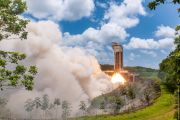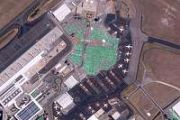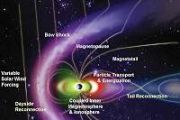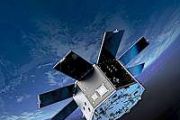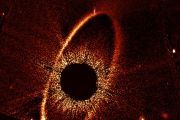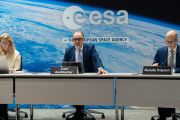
Copernical Team
High-performance board delivers robust radiation-tolerant computing for space payloads
 Frontgrade Technologies has introduced the SBC-2A72 VPX Single Board Computer, engineered for high-reliability computing in advanced space missions. The board is built around the VA7230 Dual ARM Cortex-A72 processor with integrated GPU, delivering 10.4 GFLOPs and supporting OpenGL and OpenCL standards for payload processing, imaging, and graphics. The SBC-2A72 weighs under 0.65 kilograms and con
Frontgrade Technologies has introduced the SBC-2A72 VPX Single Board Computer, engineered for high-reliability computing in advanced space missions. The board is built around the VA7230 Dual ARM Cortex-A72 processor with integrated GPU, delivering 10.4 GFLOPs and supporting OpenGL and OpenCL standards for payload processing, imaging, and graphics. The SBC-2A72 weighs under 0.65 kilograms and con ESA expands Tokyo office to strengthen partnership with Japan
 The European Space Agency has announced its first Asian office in Tokyo, appointing a staff member at X-NIHONBASHI to deepen ESA's cooperation with Japan's space sector and the Japan Aerospace Exploration Agency (JAXA).
ESA Director of Strategy, Legal and External Matters, Eric Morel de Westgaver, presented the announcement during Nihonbashi Space Week and emphasized the decades-long partn
The European Space Agency has announced its first Asian office in Tokyo, appointing a staff member at X-NIHONBASHI to deepen ESA's cooperation with Japan's space sector and the Japan Aerospace Exploration Agency (JAXA).
ESA Director of Strategy, Legal and External Matters, Eric Morel de Westgaver, presented the announcement during Nihonbashi Space Week and emphasized the decades-long partn AI-driven propulsion design advances spacecraft engineering at Northrop Grumman
 Northrop Grumman Corporation and Luminary Cloud are working together to apply artificial intelligence to spacecraft propulsion, implementing a new physics AI foundation model specifically for thruster nozzle design. The collaboration leverages Northrop Grumman's expertise in propulsion physics and Luminary Cloud's AI platform with NVIDIA's support to enable rapid hardware development for spacecr
Northrop Grumman Corporation and Luminary Cloud are working together to apply artificial intelligence to spacecraft propulsion, implementing a new physics AI foundation model specifically for thruster nozzle design. The collaboration leverages Northrop Grumman's expertise in propulsion physics and Luminary Cloud's AI platform with NVIDIA's support to enable rapid hardware development for spacecr Emerging Trends Shaping the Future of Online Esports Betting
 You're seeing online esports betting explode right now, particularly in markets like Malaysia, where the digital gaming scene continues to thrive. People who love this space, along with those investing money, are paying close attention. Because of big jumps in technology and how connected everyone is globally, esports has become a huge deal in gaming.
You're seeing online esports betting explode right now, particularly in markets like Malaysia, where the digital gaming scene continues to thrive. People who love this space, along with those investing money, are paying close attention. Because of big jumps in technology and how connected everyone is globally, esports has become a huge deal in gaming. Voyager completes ExoTerra acquisition advancing US space propulsion systems
 Voyager Technologies has announced the acquisition of ExoTerra Resource, a developer of electric propulsion systems for space operations. The move aims to address gaps in propulsion capabilities for both defense and commercial markets within the United States.
Voyager Technologies has announced the acquisition of ExoTerra Resource, a developer of electric propulsion systems for space operations. The move aims to address gaps in propulsion capabilities for both defense and commercial markets within the United States. Europe turns to space to boost resilience

The role of space for security was presented at a high-level event in Brussels on Tuesday.
The Red Spider Nebula, caught by Webb
 Image:
The Red Spider Nebula (Webb)
Image:
The Red Spider Nebula (Webb) Engineers test photonic AI chips in space
This request seems a bit unusual, so we need to confirm that you're human. Please press and hold the button until it turns completely green. Thank you for your cooperation!
Press and hold the button
If you believe this is an error, please contact our support team.
185.132.36.159 : 5ffb1d2b-bc60-4d87-87ab-73a4649e
Watch live: Sentinel-1D launch on Ariane 6

The Copernicus Sentinel-1 mission is about to get its fourth satellite, with Sentinel-1D now ready for liftoff. Launch will take place with an Ariane 6 rocket from Kourou, French Guiana and live coverage will be shown on Tuesday, 4 November, at 22:02 CET (18:02 at Kourou).
Hurricane Melissa barrels through the Caribbean
 Image:
This image captured by the Copernicus Sentinel-3 mission show Hurricane Melissa as it barrelled through the Caribbean Sea
Image:
This image captured by the Copernicus Sentinel-3 mission show Hurricane Melissa as it barrelled through the Caribbean Sea 










